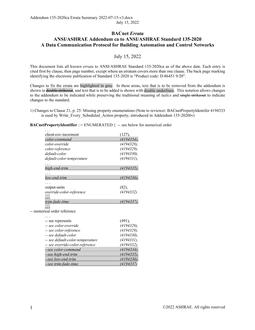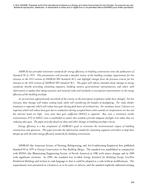Apparatus, methods, and test results from an experimental investigation of (1) the effect of moisture on the thermal conductivity of insulation materials, (2) the properties for moisture performance of the materials, including water sorption, water vapor transmission, and capillary water uptake, and (3) humidity buffering of the indoor climate by an absorbent wall are presented. The materials are cellulose fiber, flax, sheep’s wool, perlite, rock fiber, and glass fiber. Rock fiber and glass fiber are materials currently used in Denmark. The test results can be summarized as follows: The thermal conductivities of the materials are not much affected by RH until dew point is reached at the cold side of the test specimen. Some of the properties for moisture performance of the materials are very dependent on the type of material. The results from the sorption measurements confirm previously published data for the pure materials but show that added salts increase the water absorption at a high RH. The capillary water uptake tests show that perlite treated with silicon resin, sheep’s wool, flax, rock fiber, and glass fiber have a small water absorption capacity and a small short-term water absorption coefficient. The water vapor permeability, measured at a steady state, is similar for the tested materials. Humidity buffering of the indoor climate by an absorbent wall has no practical influence on the indoor climate of a house if the house is ventilated as recommended. The test results are discussed and interpreted due to use of the materials in practice.
Authors: Kurt K. Hansen, Ph.D.; Carsten Rode, Ph.D.; Ernst J. de Place Hansen, Ph.D.; Tim Padfield, Ph.D.; Finn Kristiansen
Citation: Thermal Performance of the Exterior Envelopes of Buildings VIII
Keywords: December, Florida, 2001
Citation: Thermal Performance of the Exterior Envelopes of Whole Buildings VIII
Product Details
- Published:
- 2001
- File Size:
- 1 file , 1.5 MB
- Product Code(s):
- D-8022


